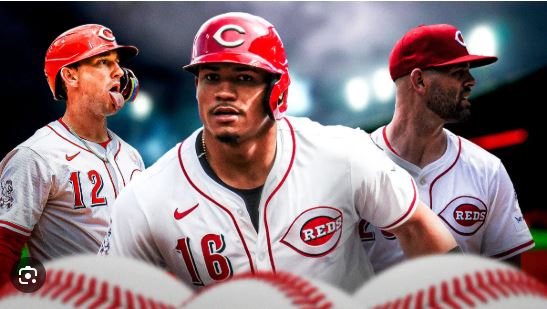
Breaking Done Deal: Cincinnati Reds Blockbuster Trade Confirm The Departure Of Another All-Star- Player. What Do You Think
## Cincinnati Reds’ Blockbuster Trade Confirms Another All‑Star Departure: What It Means
In recent months, the Cincinnati Reds have made headlines again — not for acquiring a superstar, but rather by *letting one go*. The trade that sent **Alexis Díaz**, the former Reds closer and 2023 All‑Star, to the Los Angeles Dodgers, has more implications than just a shift in bullpen personnel. ([The Telegraph][1])
Here’s a breakdown of what the trade was, why it’s significant, and what it suggests about where the Reds might be headed.
-What Happened
* **Alexis Díaz**, 28, earned an All‑Star berth in 2023 after an impressive season (37 saves, 9‑6 record, 3.07 ERA) with the Reds. ([The Telegraph][1])
* His performance declined in recent times. In the 2024 season, his ERA rose, and in 2025 he struggled in a small sample and was even optioned to Triple‑A Louisville. ([The Telegraph][1])
* On **May 29, 2025**, the Dodgers acquired Díaz in exchange for a minor‑league pitcher, **Mike Villani**. ([The Telegraph][1])What It Confirms
This trade does more than move a reliever. It confirms several things:
1. **Letting Go of Star Power**
Díaz was not just another bullpen arm — he was an All‑Star. The decision to part ways signals that the Reds are willing to shed marquee names, even if they’ve been recently successful, when performance drops or cost/roster constraints prompt reconsideration.
2. **Reassessment of Roster Strategy**
Cincinnati appears to be doubling down on rebuilding or at least resetting expectations: performance, cost efficiency, or developmental trajectory are prioritized over past status. The trade suggests they don’t believe Díaz will return to his All‑Star level — or at least, not without risk, and perhaps not in time to matter for their immediate goals.
3. **Bullpen Instability / Restructuring**
The closer role and bullpen in general are volatile positions. Losing a former closer with high expectations underscores that Cincinnati’s bullpen is not stable, and that the front office is willing to gamble (or experiment) to improve consistency.
4. **Financial / Contract Implications**
Teams frequently trade away players when salaries, arbitration, or contract expectations no longer align with projected performance. While Díaz isn’t at the very top of salaries, his struggles may have made maintaining him in the role less attractive than moving him and freeing roster / payroll resources. ([The Telegraph][1])
-The Downsides & Risks
While the trade might make sense on a cost/option basis, there are risks:
* **Lost Closer Stability**: You trade away an established closer, even one struggling, and you risk not having someone reliable in late innings. That can cost games and morale.
* **Fan and Clubhouse Perception**: Fans often view All‑Stars as cornerstones. Trading one can feel like giving up or admitting failure. It also influences how current players view the team’s commitment to winning.
* **Rebuilding vs. Competing**: If you trade away your better or name‑brand players, you risk entering a “losing mode.” The Reds need replacements who can step up, either from within or via trades / free agency. Without them, the performance drop could be sharp.
-What It Tells About Reds’ Direction
Putting this together, the move illustrates a few things about where the Reds are likely headed:
* They may accept another season (or more) of inconsistency or underperformance in order to reshape the roster more sustainably.
* It suggests a front office more willing to take longer views — not just chasing short‑term wins if the cost is too high, especially for players whose recent performance has declined.
* The Reds might be more aggressive on trading or acquiring younger arms, lower‑cost relievers, or prospects, rather than banking on reclamation or hope for bounce‑backs
I see this as a realistic move. Sometimes, holding on to past success (or past status) costs more than letting go. If the Reds believe that Díaz will continue to decline, or that his salary + roster spot is not justifiable, then trading him while still drawing interest makes sense.
However, the team needs to show that it has a plan to fill the void — closer role, bullpen, leadership. Otherwise, trading away an All‑Star could become more symbolic than strategic. It’s one thing to say you’re rebuilding; it’s another to demonstrate how you’ll rebuild without leaving gaping holes.
–
Leave a Reply